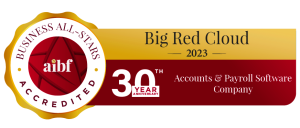Branding is a crucial business activity that can give you a competitive advantage if done correctly. Branding is much more important than a logo, design and packaging. It is about your product offering, customer experience and the journey your customer goes through during the buying cycle.
As a small business, resources are often scarce and you may decide to outsource your branding to the experts. On the other hand you may have the skills in house to do this.
So here are 4 steps to build your brand for your business.
- Define your brand
The first step to defining your brand is understanding what product or service you are offering your customers. No one knows this better than you. By now you will have a good understanding of the market you are operating in and will understand your target audience. You will understand your customer’s wants and needs more than anyone and know what is driving your business. If you are unsure of this, Entrepreneur.com suggests answering these few questions:
- What is your company’s mission?
- What are the benefits of your products or services?
- What do your customers and prospects already think of your company?
- What qualities do you want them to associate with your company?
If you struggle to answer these then consider investing time and resource in research. Your promise to your customers will be the basis of your brand.
- Build relationships with customers
One common mistake that businesses make is promising customers more than they can offer them. This can lead to a raised expectation of the customer to what you are delivering to them. This can lead to mistrust meaning customers will go elsewhere. The internet has made the marketplace easily comparable on price and customers will not hesitate to find an alternative if they feel they are not being given what they have been promised.
Creating a relationship with your customers through effective communication and maintaining this will encourage brand loyalty. Don’t forget that relationships will take time to build so ensure you stick to your company values and stay true to your brand.
- Use key targeted messages
Your brand message will link to your company mission and values which can be used in your brand campaign. Be careful not to have too many targeted message as this could dilute your overall brand message. You may want to target different demographics in different ways, so consider using a different communication channels to do this. Content marketing and social media are different ways to interact with your audience and distribute your brand message effectively to them.
- Create a physical brand presence
When creating your brand you may already have a logo design in place. If you have not, then consider your vision, values and mission when creating your physical branding. Remember that colours evoke different emotions and can mean different things in different countries. Your logo will form the design for your packaging and promotion. Promotional items can include carrier bags, woven labels, headed paper, swing tickets and any content.
We recommend creating a set of brand guidelines so that any internal staff or external suppliers can stick to. This will protect your brand and keep consistency.
Whether you decide to outsource or stay in house, consider these 4 steps and understand your brand before anyone else. This will create the foundations to a successful brand.
©This blog post first appeared on Small Business Can.





